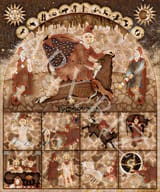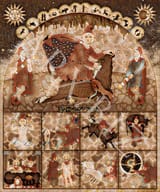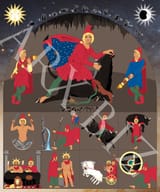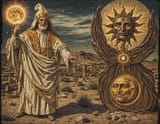>>17937520
>>17937528
The Moon, in Neoplatonic, Gnostic, and Hermetic thought, is seen as the ruler of the sublunar sphere, the domain of generation, change, and matter.
It directly influences the sea, where humans saw their reflection before the invention of the mirror, with the tides and also regulates the female menstrual cycle, which marks the capacity to generate life, that is, the point at which the soul can be transported to the material world through the body.
Unlike the Sun, which produces its own brightness, the Moon does not, the Moon only shines because it reflects the light of the Sun, the "Moonshine" that we see at Night is just the brightness of the Sun reflected in the Moon like a mirror.
The sea, by reflecting the Moon's light from Sun, functions as a mirror of its influence, just as the mirror/glass, made of sand, reflects the image without itself being the source of light. This reflection symbolizes how the material world is not the ultimate reality, but merely the projected image of the spiritual.
The female menstrual cycle, regulated by the Moon, is a microcosm mirror of this process: just as the Moon and the sea reflect like a mirror and manifest higher forces from the higher planetary spheres led by Sun, the human body reflects on the earthly level the cosmic rhythms that shape life.













